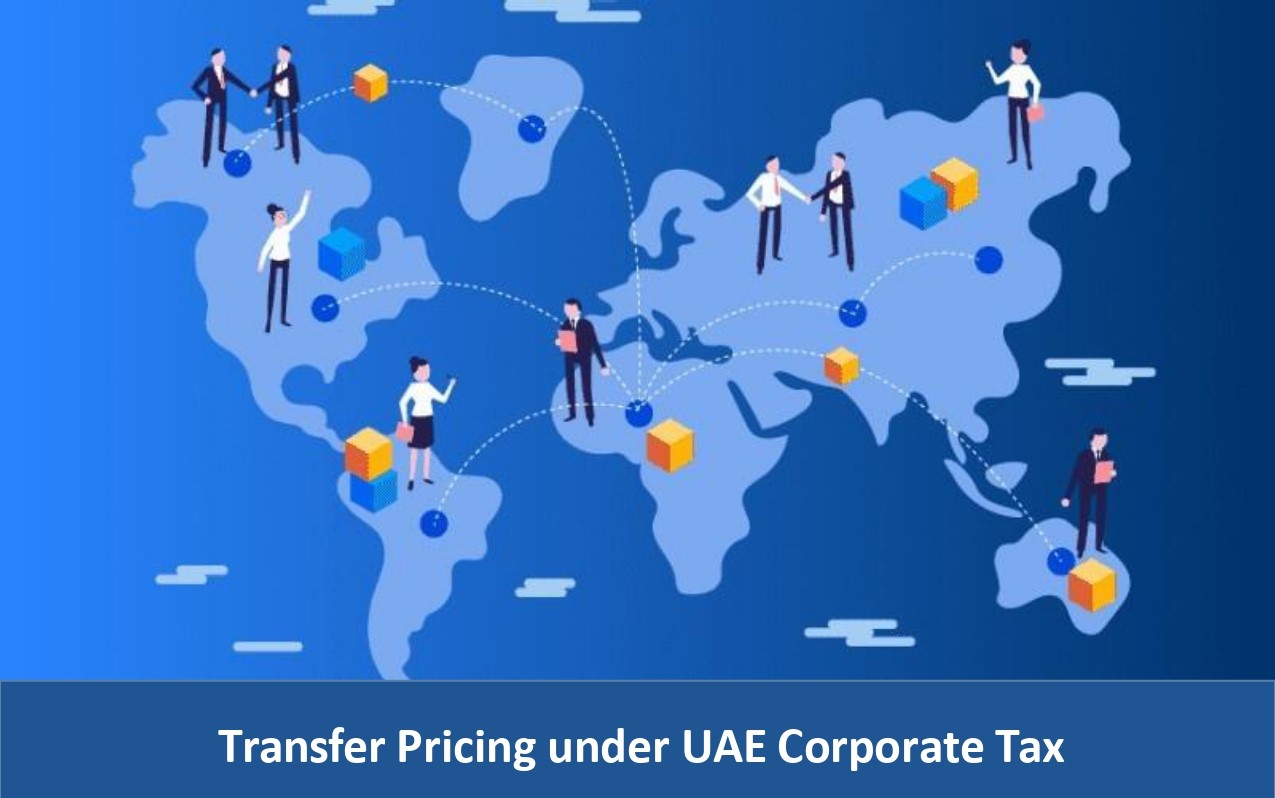Transfer Pricing in UAE Documentation and Its Importance:
Transfer pricing documentation in the United Arab Emirates (UAE) is a crucial aspect of corporate tax compliance. It plays a pivotal role in helping companies determine their tax liabilities when filing corporate tax returns. These documents have a significant impact on the amount of taxable income declared by businesses in the UAE. If required by the Federal Tax Authority (FTA), companies must submit comprehensive transfer pricing documentation as part of their corporate tax returns.
Global Significance of Transfer Pricing Procedures
Transfer pricing procedures have garnered immense attention worldwide, reflecting the growing importance of transfer pricing on corporate taxation in the UAE. As businesses engage in cross-border transactions, they realize the significance of adhering to transfer pricing regulations. Both large and small enterprises face increased risks due to heightened scrutiny by tax authorities and regulatory standards. Consequently, many global organizations proactively plan for cost management options provided by the best transfer pricing models.
Al Marzaan Consultancy’s Role in Developing Tax-Effective Strategies
Al Marzaan Consultancy plays a critical role in assisting businesses in developing tax-effective strategies that optimize compliance with UAE laws and regulations regarding transfer pricing. Before delving deeper into their services, it’s important to understand the concept of transfer pricing in the UAE and the regulations governing it.
Understanding Transfer Pricing in UAE
Transfer pricing refers to the practice of setting prices for goods or services exchanged between different units or divisions of a multinational corporation. In the UAE, these inter-entity transactions are regulated by transfer pricing rules, which have been significantly influenced by the UAE’s corporate tax regime. The primary objective of these rules is to ensure that related parties engage in transactions at arm’s length. This means that transactions should occur at prices comparable to those charged in similar transactions between unrelated parties.
Arm’s Length Price (ALP)
The arm’s length price (ALP) is a key concept in transfer pricing. It represents the price that would be paid for a transaction between two related firms as if the transaction took place between two independent and unrelated entities. The ALP principle is based on the idea that related parties should conduct transactions with each other at prices that reflect normal market conditions driven by supply and demand.
Determining ALP for Services
In the global business landscape, determining the Arm’s Length Price (ALP) for services exchanged between related entities within Multinational Enterprises (MNEs) holds significant importance. Accurate determination of ALP for services can have substantial effects on tax liabilities, financial reporting, performance evaluation, and profit allocation. It promotes transparency and reduces the risk of tax disputes by ensuring fair and Transfer Pricing-compliant service pricing.
Factors Affecting the Determination of Transfer Pricing
Several factors influence the determination of Transfer Pricing:
- Contractual Terms: Agreements specified in contracts that outline the terms of a business partnership.
- Economic Conditions: Economic factors and market dynamics impacting transactions.
- Unique Expertise and Specialized Skills: Distinctive knowledge and skills that set individuals or entities apart.
- Functions Performed: Roles and responsibilities undertaken in a professional or operational context.
- Risk Assumption: Acceptance of unknowns and exposure to unfavourable outcomes.
- Intangible Contribution: Adding value through intangible assets such as patents, trademarks, and intellectual property.
Related Parties and Connected Persons
In the UAE, a related party is an individual or entity that has a prior relationship with a business subject to corporate tax regulations due to factors like ownership, control, or kinship (in the case of natural persons). Connected persons, on the other hand, include individuals or related parties who have ownership interests or control over the taxable person. For instance, directors, officers, or partners in an unincorporated partnership can be considered connected persons.
Impact of Transfer Pricing on UAE Corporate Tax
As per the Ministry of Finance, transfer pricing laws in the UAE ensure that transactions between related parties occur at arm’s length terms, akin to transactions between independent parties. Businesses in the UAE must adhere to these transfer pricing rules and meet the documentation requirements outlined by the Organization for Economic and Co-operative Development (OECD) guidelines. The Federal Tax Authority assesses related policies, documentation, and inter-company and inter-group transactions to ensure consistency with transfer pricing laws.
Corporate Tax Returns and Transfer Pricing
In the context of corporate tax returns in the UAE, transfer pricing practices can significantly influence the amount of taxable income a company reports. If a company is found to be engaging in transfer pricing practices that artificially reduce its taxable income in the UAE, the Federal Tax Authority may make adjustments to the company’s tax liability based on arm’s length principles. This underscores the importance of the local file and country-by-country (CbC) report, both of which are part of transfer pricing documentation and must be submitted along with corporate tax returns in the UAE under specific criteria.
Need for Transfer Pricing Documentation
UAE transfer pricing rules mandate that companies maintain comprehensive documentation to support their transfer pricing arrangements for cross-border transactions. This documentation should include an analysis of the transfer pricing policy, a description of the transactions and their economic context, and an analysis of the transfer pricing method employed. The primary purposes of transfer pricing documentation are:
- Ensuring compliance with transfer pricing requirements for setting prices and other conditions and reporting income from similar transactions.
- Facilitating detailed risk assessments by tax administrations.
Transfer Pricing Documentation Conditions for Corporate Tax in UAE
As per Ministerial Decision No. 97 of 2023, the UAE government has established conditions for taxable persons to maintain Transfer Pricing Documentation (Master File and Local File) for UAE Corporate Tax. These conditions include:
- Taxable persons engaging in transactions with related parties and connected persons with a total consolidated group revenue of AED 3,150 million must prepare Transfer Pricing Documents.
- Taxable persons with a revenue of AED 200 million in the relevant tax period are also required to maintain this documentation.
- The Local file should encompass transactions or arrangements with specific Related Parties and Connected Persons, depending on the taxable person’s status.
- The Local file should not include transactions or arrangements involving certain categories of taxpayers.
Al Marzaan Consultancy’s Role in Transfer Pricing Documentation
Al Marzaan Consultancy, as a top chartered accountant firm in Dubai, offers the services of experienced accountants and tax consultants in the UAE. They assist businesses in preparing documentation in line with Transfer Pricing guidelines under Corporate Tax in the UAE.

